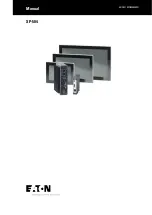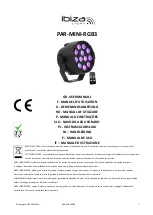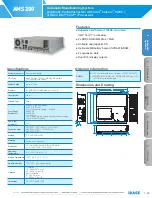
32
14. Settings for Various Fruits and Vegetables
● The settings below are only suggested guidelines. Settings may require adjustment based on the
variety of item, place of origin, harvest time and ripeness.
Moreover, an item may not be peeled depending on the condition.
1) Apples, Asian Pears
Article
Recommended Settings & Procedures
Explanation
Fixing Prong
HP-M2, HP-M3
The firm, dense texture permits a short prong to be used.
Peeler blade
F-4, F-3
Best for these fruits
Push plate
Medium
It is exclusive.
Settings
Skin Thickness
4~6
For larger items use lower values
Spin Speed
4~6
Additional adjustments
Peeling range
Angle
L to R
0°
180°
10°– 150°
You may set the right side angle to 150°or above if skin
remains after core removal.
Peeling
Direction
L -> R
Reverse direction (L <- R) if the item is soft.
Peeling throw
NO
When skin is liable to get tangled, set to "YES".
Peeling Finish
High Speed
Optimal
Preparation
Remove long stems
Stems can foul the peeler blade.
Fixing Direction
Insert the prong thru the upper axis of the fruit.
Optimal
1. For Western pears
● Western pears are softer than apples or Asian pears. Therefore, use an HP-L3 prong and reduce
spin speed. Skin may be left on the narrow (top) end of Western pears.
2) Kiwi fruit
Article
Recommended Settings & Procedures
Explanation
Fixing Prong
HP-MB
Optimal
Peeler blade
S-3
Optimal
Push plate
Medium
It is exclusive.
Settings
Skin Thickness
4~6
Adjust based on the softness and size of fruit
Spin Speed
4~6
Additional adjustments
Peeling range
Angle
L to R
0°
180°
10°– 150°
When the fruit is firm
0°
180°
10°– 150°
When the fruit is soft.
Peeling
Direction
L <- R
To prevent the fruit from slipping off the prong.
Peeling Throw
NO
When skin is liable to get tangled, set to "YES".
Peeling Finish
High Speed
Optimal
Preparation
Wash off excess skin hair
Loose kiwi fruit “hair” will shorten the life of the blade, and may
remain on the fruit after peeling.
Cut off the top of the fruit.
Do this if the fruit is soft.
Fixing Direction
Insert the prong thru the upper axis of the fruit.
Optimal
● If the fruit size is small (short), use the HP-SB fixing prong.
Summary of Contents for FAP-1001
Page 43: ...42 MEMO ...












































